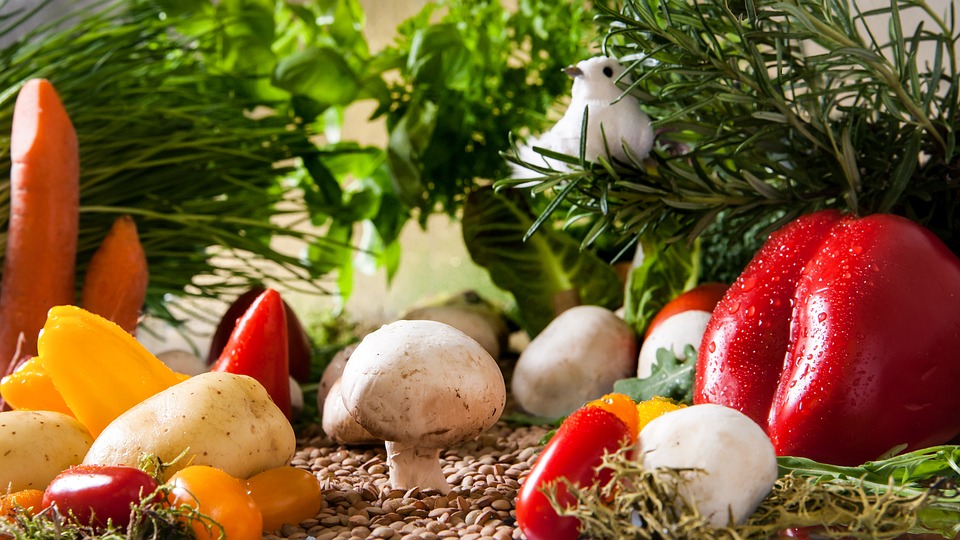
Do you want to own a garden but feel like you don’t have enough time to cater after it? All the tips below are going to help you plan a garden which will be low-maintenance which will give you fresh food throughout the garden season.
There are multiple advantages of growing your food, including unique flavors and nutritional value. You will eat food that does not contain pesticides and chemicals along with saving money at the grocery store. I know a lot of people who would love to grow their own food but unfortunately, life is very busy for most of them. It is difficult for one to start planting as many people worry about adding one more difficult task to their hectic life.
Even in a small landscape, growing your food can be fun and very rewarding. It is always great to serve fresh, healthy and nutritious food on your table. Even if you don’t have a lot of time to spend in your garden, the following tips are going to help you :

1. Start Small
When spring is here, you would always want to plant many vegetables but after some time, you find it hard to keep up with. This eventually leads to frustration and the need to give up on your garden. Do not spend a lot of time digging your yard in order to plant a large garden especially if you know that you will not have time to take care of it.
If you plan it properly, gardening can be fascinating and rewarding. Instead of digging a large garden, focus on planting a small one. If it works fine, you can always expand it in the future. It is easier to take care of your garden when it is on a smaller scale.
2. Grow only food that you love
It is futile to invest your time into growing a vegetable which no one will eat at your place. Consider growing vegetables which you and your family like to eat. Make a list of all the products that you buy often from your farmer’s market. If you love salads, then growing tomatoes, lettuce and greens would be a great idea. Peppers, onions, tomatoes, and cilantro should be on your priority list if you love fresh salsa. Vegetable gardening is rewarding when you collect all the foods that you enjoy.
3. Build a raised bed
Raised-bed gardening is the perfect way to grow vegetables. By doing so, you do not have to worry about digging a garden as raised beds are easily placed on the top of the ground.
You can opt for the square foot garden. It is a quick and effective way to get your garden started. You just need to build a raised bed out of 2×6 inch boards, a layer of cardboard on the grass, fill the bed with a growing mix and a plant right away using the charts which you can find in books.
Since you begin with fresh, nutrient-rich soil, for the first few years, you don’t have to worry about weeds. The next advantage is that healthy soil aids your plants to grow closer which helps to prevent moisture loss.

4. Choose to grow easy vegetable
It will be smarter if you grow vegetables that are easy to maintain and will not need a lot of attention other than watering and harvesting. There are two types of vegetables: cool and warm season. Cool season crop can handle light frosts and thrive in a cooler part of the growing season in early spring and fall while warm season crops need both warm soil and high temperatures to grow and produce fruit.
For a cool season, you can grow beets, carrots, kale, lettuce, radishes, spinach, potatoes, onions, chard, and peas.
For warm season opt for bush beans, cucumbers, peppers, bush tomatoes, and zucchini.
Herbs: these are the easiest to grow and add a lot of flavors to your meals as well. For example, you can grow oregano, parsley, thyme, sage, mint, cilantro, and basil.
5. Purchase transplants
You can start growing your plant from seed but it takes a lot of care and time indoors until they are ready to be transplanted in your garden. That is why it is easier to buy transplants from a nursery or garden. It is the fastest way to start your garden.

6. Minimize the need to water and weed
The best thing you can do to avoid a lot of digging or weeding is to grow your plants in containers. In order not to water the plant every day yourself, you can invest in self-watering containers. These containers have a growing and water reservoir chamber. In that way, you just need to refill the water chamber and your plants will have enough water to survive.



